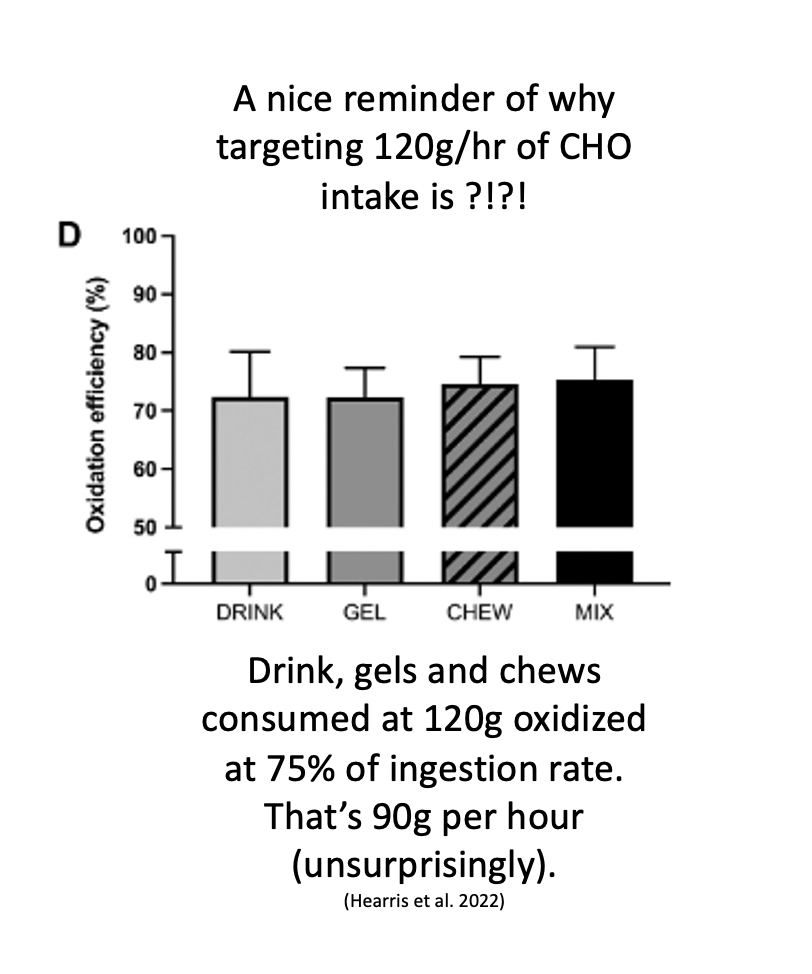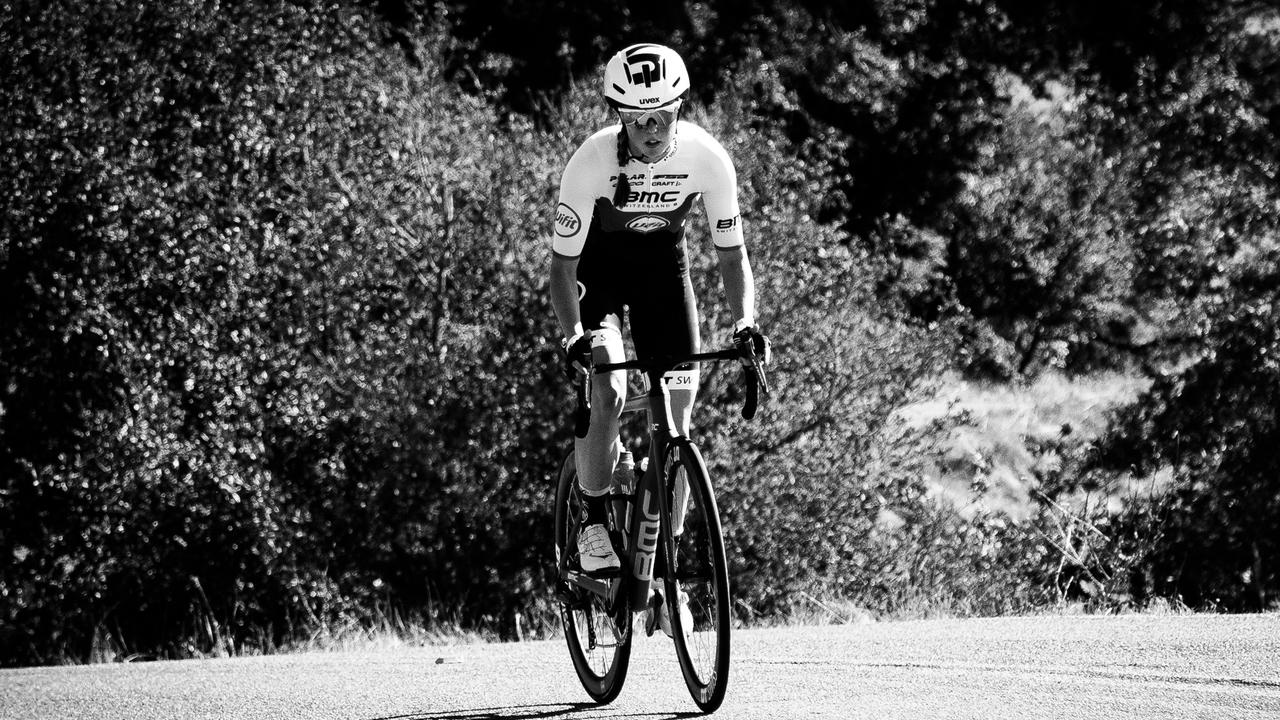Carbohydrate ingestion rates during exercise: 90 vs 120 grams per hour – which is best?

I recently made a post on Instagram that got a lot of attention and questions, and it was one that compared the percentage efficiency of carbohydrate (CHO) ingestion when was taking 120 g of CHO per hour. There were a lot of questions, and of course it’s hard to explain in enough detail via an Instagram story (see below).
 So, as such, in this blog, I am going to have a look at the emerging literature suggesting it may be possible to ingest carbohydrate at rates as high as 120 grams per hour during exercise (that’s ~5-6 gels!). Carbohydrate ingestion during training and racing has a long history in exercise physiology, sports nutrition, and endurance sport. Despite decades of research investigating the optimum dose, type, and form of carbohydrate to support performance, research is still emerging that challenges our practices. So, let’s get into it.
So, as such, in this blog, I am going to have a look at the emerging literature suggesting it may be possible to ingest carbohydrate at rates as high as 120 grams per hour during exercise (that’s ~5-6 gels!). Carbohydrate ingestion during training and racing has a long history in exercise physiology, sports nutrition, and endurance sport. Despite decades of research investigating the optimum dose, type, and form of carbohydrate to support performance, research is still emerging that challenges our practices. So, let’s get into it.
Why carbohydrate during exercise?
We have often discussed how whilst the body’s fat energy stores are vast and effectively limitless dur...
Hill reps and overgearing: What does the science say?

Image by Rook Media
We’ve really been enjoying watching the return of road racing after the pandemic (or somewhat ‘after’), like we're sure many of you are too, and are particularly enjoying watching the athletes at Le Tour grinding up the Alps and Pyrenees in big gears and at massive power outputs. Hill reps are a common part of many endurance training programs, whether that be for running, cycling, or triathlon, and at Endure IQ we are big fans of riding up hills and doing specific overgearing work on the trainer in preparation for a long-distance triathlon (in fact, we dedicate a whole module to this type of training in our three disciplines in our online course LDT 102). We thought now was as good a time as any to review some of the key studies in this field, and whether the available research backs up this type of training prescription.
Specific strength training for endurance athletes
We call this type of work – whether it be riding or running up-hill, or riding on the...
Should I train my gut? Both sides of the coin on preserving endogenous carbohydrates

- Dan Plews and Ed Maunder
As we have mentioned in previous blogs, during ultra-endurance events lasting ~8-15 hours like long-distance triathlon, the preservation of endogenous carbohydrate (CHO) stores is one of the key determinants of success (25). As humans, we possess a finite capacity to store CHO energy as glycogen, typically <3000 kcal, of which ~80% is stored in muscle and ~10-15% in the liver (7). Assuming typical running economy values observed in highly-trained distance runners (1.07 kcal.kg-1.km-1) (6) and a body mass of 68 kg, these endogenous CHO stores would not be sufficient to support even one marathon alone (~3070 kcal), let alone a marathon following a 3.8-km swim and a 180-km bike ride. Accordingly, exercise of sufficient duration and intensity – such as an Ironman – will deplete these endogenous CHO energy stores to very low concentrations, and this glycogen depletion has been linked to the fatigue we feel in the late stages of a race (27–29).
Theref...
